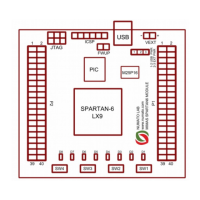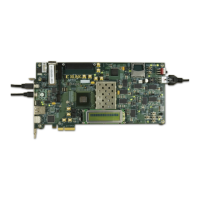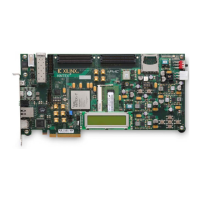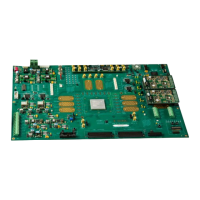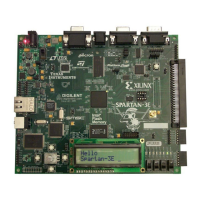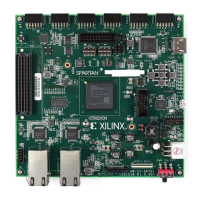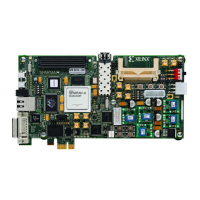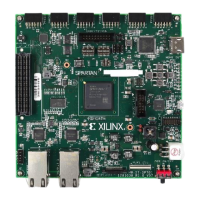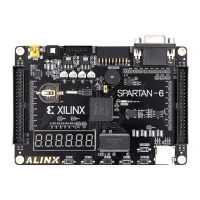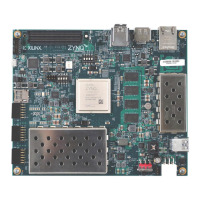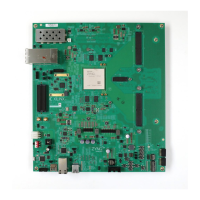62 www.xilinx.com Spartan-6 FPGA PCB Design and Pin Planning
UG393 (v1.1) April 29, 2010
Chapter 6: I/O Pin and Clock Planning
that require V
REF
pins in bank 1 and also use the BPI configuration mode. Designers need
to review the tradeoffs before dedicating multi-function pins.
Designs using the Master SelectMAP configuration mode must be able to manage toggling
pins during configuration since the address bus A[25:0], and the BUSY, FOE_B, FCS_B, and
FWE_B multi-function pins can toggle during the configuration process.
Memory Controller Block
The BPI configuration mode cannot be used when the design uses the memory controller
block (MCB) in bank 1. Conversely, when configuring in BPI mode, the MCB in bank 1 can
not be used.
Configuration Options
Proper design planning considers any pins required by the configuration options.
Readback
Ensure that the configuration pins that will persist as configuration pins for readback are
not used as user I/O by the design. The table in the Reserving Dual-Purpose Configuration
Pins (Persist) section (Chapter 5) of the Spartan-6 FPGA Configuration Guide lists the pins
that will persist for each configuration mode.
Readback CRC
Readback CRC requires that the INIT_B pin be used as the CRC error flag. Therefore, the
INIT_B pin is not available as a user I/O unless the CRC error flag is disabled by using the
constraint: POST_CRC_INIT_FLAG = DISABLE. Chapter 8 of the Spartan-6 FPGA
Configuration Guide contains more details on Readback CRC including a UCF file design
implementation example.
External Clock Option for Master Configuration Modes
The USERCCLK option for the Master configuration modes uses the same I/O as the
GCLK0 pin.
Memory Controller Block
MCB Pin Planning Considerations
The Spartan-6 FPGA MCB shares multi-function I/O pins with other functions such as
GCLK and configuration pins. When using these pins for the MCB, they cannot be used for
the other functions. The Memory Interface Generator (MIG) tool in the Core Generator
software generates the specific pin assignments for each MCB.
Note:
The MCB in I/O bank 1 has the most multi-function pin conflicts. To avoid these conflicts, use
the MCBs in other I/O banks whenever possible.
In addition to the typical interface pins associated with memory interfaces, two additional
user I/O pins are usually required: RZQ and ZIO. The MIG tool adds these two additional
I/O pins automatically. See the Spartan-6 FPGA Memory Controller User Guide for more
information on their usage and required terminations.
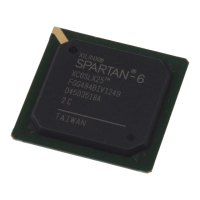
